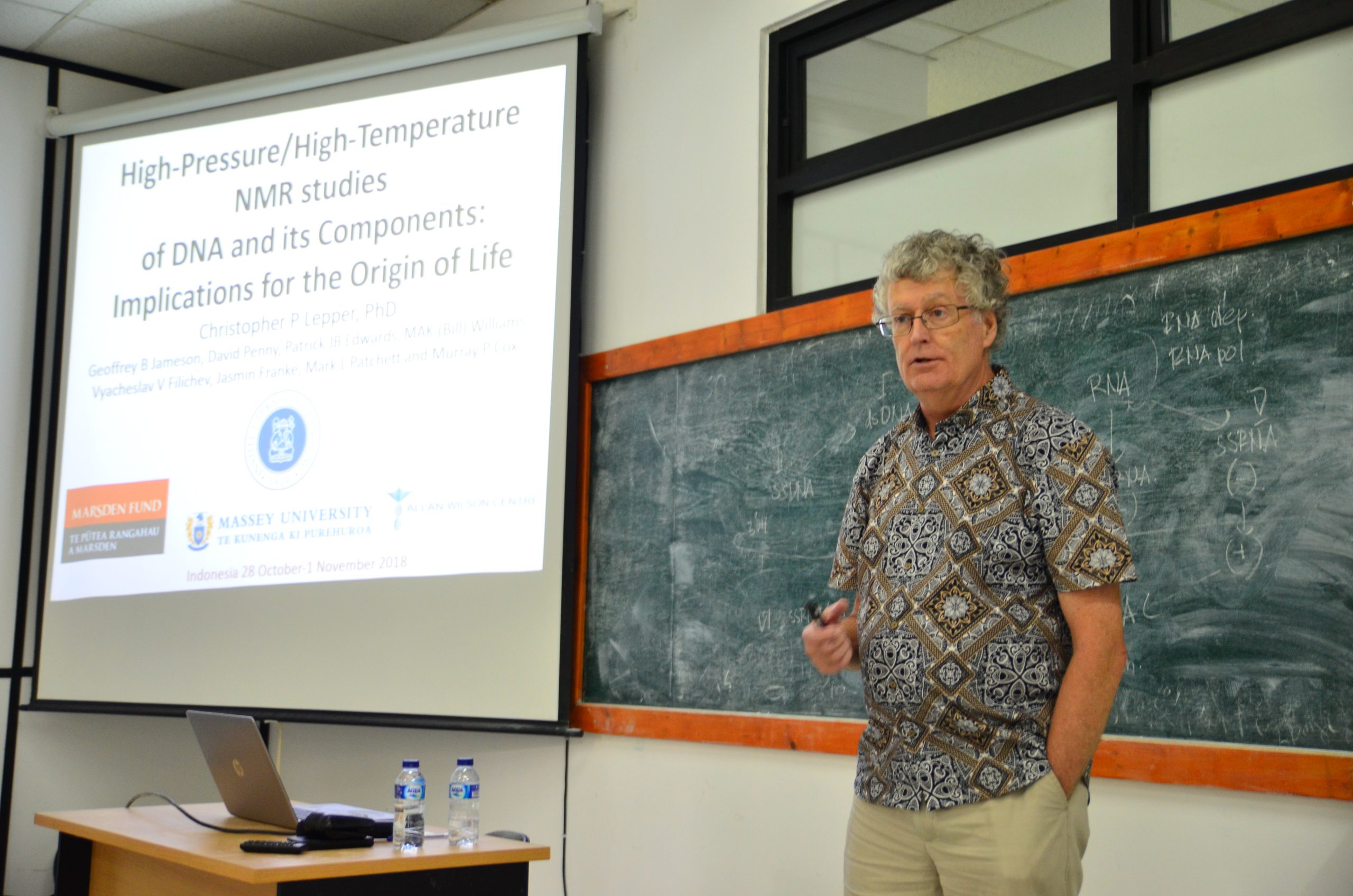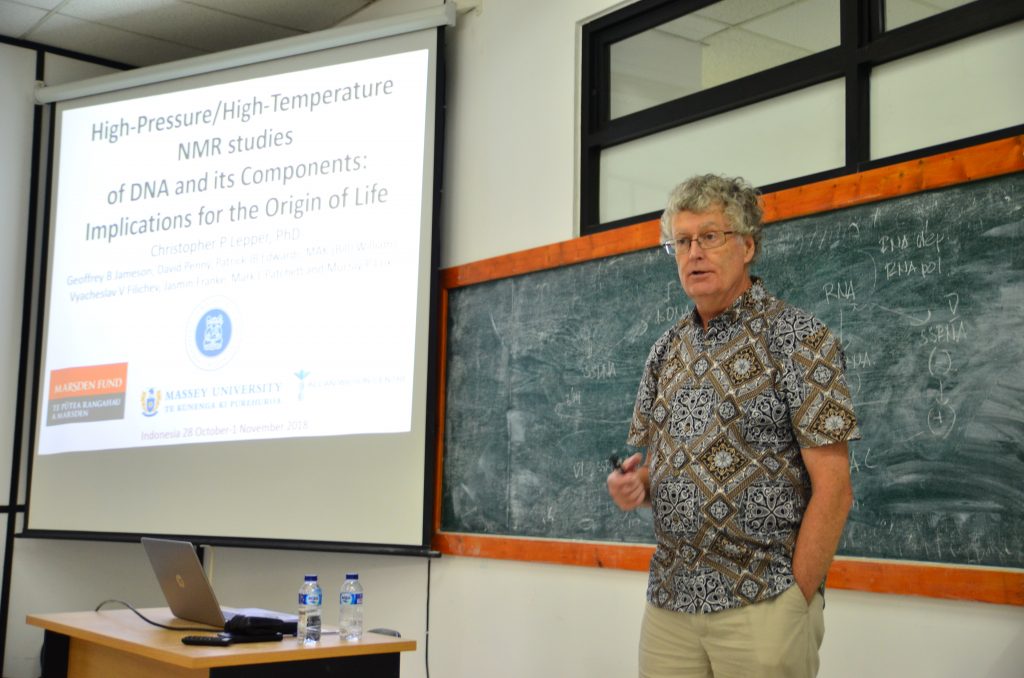Seri Kuliah Tamu Kimia ITB 2018 – Prof. Geoffrey B. Jameson (Massey University, Selandia Baru)

(BANDUNG, www.chem.itb.ac.id) Pada hari Senin tanggal 29 Oktober 2018, Program Studi Kimia, FMIPA, ITB menyelenggarakan Guest Lecture dalam bidang kimia organik. Kuliah tamu diselenggarakan di Ruang Dalton FMIPA ITB dengan dimulai pada pukul 11.00 WIB. Prof. Geoffrey B. Jameson, seorang ahli dalam struktur kimia dan biologi dari Massey University, Selandia Baru memberikan kuliah dengan judul “High-pressure/high-temperature nmr studies of dna and its components: implications for the origin of life”. Dalam kesempatan tersebut, beliau memaparkan penelitiannya tentang asal usul kehidupan (Origin of Life) dalam kaitannya tentang kestabilan DNA dan penyusunnya pada tekanan dan suhu yang tinggi. Kuliah tamu yang diprakarsai oleh Dr. Deana Wahyuningrum dan dimoderasi oleh Dr. Rindia M. Putri ini mendapatkan perhatian yang cukup tinggi dari audiens, ditandai dengan banyaknya peserta yang hadir dan pertanyaan yang diajukan pada saat sesi tanya jawab. Acara ditutup dengan penyerahan cindera mata dan foto bersama.(Oleh: Dikhi Firmansyah, Editor: MI)
Prof. Geoffrey B. Jameson mengawali Guest Lecture di Kimia ITB dengan menyapa para hadirin. (Foto: Dikhi Firmansyah)
Berikut merupakan abstrak kuliah yang disampaikan:
HIGH-PRESSURE/HIGH-TEMPERATURE NMR STUDIES OF DNA AND ITS COMPONENTS:
IMPLICATIONS FOR THE ORIGIN OF LIFE
Various scenarios exist for the origin of RNA-based life forms that preceded the current largely protein-based life forms – hot-start versus cold- or warm-start, acidic versus basic pH – but little is known about the effects of high pressure on the chemical stability of nucleotides and the physical stability of folded functional RNA, which had both information storage and catalytic functions. In particular, cytidine hydrolyses to uracil at a measurable rate at elevated temperatures and ambient pressure, and folded RNA molecules, such as tRNA, unravel at mildly elevated temperatures.
Here, using a special cell and rig, we have examined by NMR spectroscopy the chemical stability of cytosine and cytidine at 100 oC as a function of pressure. By means of Next-Gen sequencing, the sequence-specific susceptibility to hydrolysis of cytosine in bacteriophage DNA, in circular double-stranded, single-stranded and linear forms, has been explored as a function of temperature, pressure and time.
We also examined by NMR spectroscopy the melting temperatures, residue-by-residue, of self-complementary hexamers and dodecamers of DNA, the latter with varying cytosine content ranging from 16.7% to 83.3% over the pressure range 0.1 MPa to 200 MPa. Remarkably, the oligomers did not necessarily melt from the ends. A tentative interpretation has implications for gene expression.
Next-gen sequencing of bacteriophage DNA subjected to various regimes of temperature and pressure has revealed marked adjacency effects on cytidine deamination.
All in all, high pressure does not compensate for high temperature to enhance chemical or physical stability of at least DNA and its key constituent cytidine.



